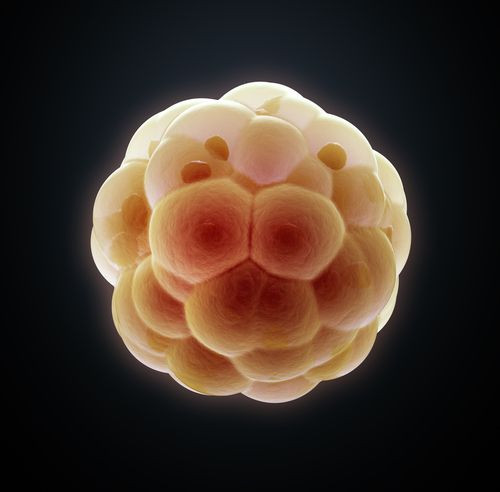Embryo Development Regulated By ‘Toddler’ Protein Which Synchronizes Cell Movement

Each of us begins life when sperm meets egg, after which a tiny cluster of cells develops and then dramatically transforms when the cells move and rearrange themselves into a more complex, multi-layered organism. Since biologists first discovered this mysterious embryonic process, they have wondered: What exactly prompts this remarkable reorganization of cells? Now a team of Harvard scientists have detected within the embryo a signal protein, which they wryly named “Toddler,” that instructs cells to move and rearrange, ushering in a new phase of embryonic development. “The thought in the field — and I was one of the people who believed this — was that all the signals that regulate early development had been found,” said Dr. Alexander Schier, senior author of the study, which appears in Science, and professor of molecular and cellular biology at Harvard University. “The discovery of Toddler suggests that other uncharacterized signals might still be out there.”
Embryonic Development
The earliest stages of embryonic development follow once an egg is fertilized by a sperm and a new cell known as the zygote forms and then begins to rapidly divide. These cells, together shaping an irregular round clump, eventually move and arrange into distinct cell layers in a process known as gastrulation. (The same process occurs in nearly all living creatures.) During this process, three primary germ layers form: endoderm, mesoderm, and ectoderm — each tasked with a different purpose. The most internal layer, the endoderm, will eventually develop into the internal organs. The middle layer, the mesoderm, will form into muscle, the skeletal system, and the circulatory system. Finally, the most exterior layer, the ectoderm, will become skin, brain, the nervous system, and other external tissues. The fact that this biological process takes place has been clear for some time, but scientists never understood what exactly prompts this migration, when all the individual cells begin to move at once, as if choreographed in a ballet.
“We have been interested in this question for 20 years,” Schier explained in a press release. “We’ve made a great deal of progress in understanding how these cells are made, but we could never really explain why these cells suddenly start to move.” An unexpected discovery while investigating RNA provided the answer. “We serendipitously found this new protein,” Schier noted.
It is known that RNA molecules are sometimes involved in the transmission of genetic code, in which case they synthesize proteins, yet it is also known that RNA performs non-coding functions. While studying noncoding RNA — genetic material that is not translated into proteins — Schier and Andrea Pauli, a postdoctoral fellow in molecular and cellular biology, discovered that a segment they believed to be noncoding was actually producing an unidentified protein. “We have been interested in noncoding RNA for quite a while, but one of the big issues is how to be sure the RNA you’re looking at is really noncoding,” Schier stated. “What we discovered was that one RNA that was thought to be noncoding was actually translated into a protein that turned out to be very interesting.” They soon figured out this interesting protein, now known as Toddler, had a unique mission within the developing embryo.
The Experiment
Using zebrafish to conduct their experiments, Schier’s team removed the RNA responsible for manufacturing the protein and then observed the results. Minus the RNA, the fish developed dramatically smaller hearts and, in some cases, none at all. Performing the experiment again, the scientists examined the zebrafish embryos more closely and discovered the developmental problems occurring in the heart could be traced all the way back to cell movement — more precisely, the lack of cell movement — during the gastrulation stage when the three distinct cell layers are formed.
“Initially, the cells [forming the embryo] don’t move much, but when this signal [Toddler] and its receptor are activated, they become much more motile,” Schier said. Significantly, the team of scientists believes this same signal is expressed in the early development of mice and also humans.
Going forward, then, the researchers will investigate how the Toddler signal controls embryo development in other species while also attempting to gain a more nuanced understanding of how this signal regulates movement and what exactly this means. “We know if cells don’t receive this signal, they move less,” Schier said. “At the moment, we don’t know, in terms of movement, why they’re slower. Are they stuck somewhere? Do they not have enough traction? Do they move in a different way? We want to understand the physics of this cellular movement better."
Finally, Schier and his co-authors hypothesize their recent discovery of Toddler “might be the first in a series of uncharacterized developmental signals.” In all likelhood, the search party has already gone out to find more protein signals with the hope of someday identifying them all. Although science has not yet completely demystified the miracle of life, greater understanding of embryonic development may, at the very least, make the ballet of early cell movement an even more spectacular performance.
Source: Schier AF, Pauli A, Norris ML, et al. Toddler: An Embryonic Signal That Promotes Cell Movement via Apelin Receptors. Science. 2014.
Published by Medicaldaily.com



























